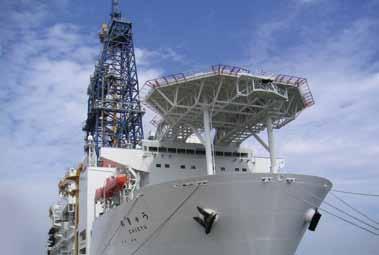
12 minute read
A timeline of major events for the gas industry in Japan
from IGU Magazine October 2017
by IGU
1871 The manufacture of gas from coal begins for lighting in the Imperial Mint in Osaka; the use of gas for lighting spreads to other cities such as Yokohama (1872) and Tokyo (1874). Cities set up Gas Boards.
1885 Tokyo Gas, today Japan’s largest gas utility, is set up from the Tokyo Gas Board.
1886 Tokyo Electric Lighting set up; the focus of gas marketing moves from lighting to cooking and heating.
1897
Osaka Gas, today Japan’s second largest gas utility, is founded; it starts supplying gas in 1905.
1912 The Imperial Gas Association is founded.
1923 On September 1, the Great Kanto earthquake causes extensive damage in Tokyo and surrounding areas but gas supplies are resumed after two months.
1945 Following World War II the Japanese gas industry rebuilds. The gas industry body goes through a number of changes until in 1947 the
c Period gas lamps at Tokyo’s
Gas Museum commemorate the early lighting installations of the 1870s.
xc The Iwasaki gas works of
Osaka Gas in 1905.

xv (below) The Osaka Gas
headquarters in Nakanoshima in 1911. A new office building was completed in 1933 ( opposite below).

Japan Gas Association is founded, becoming a Charter Member of IGU in 1952.
1950s The manufacture of gas from crude oil is introduced.
1959 The Higashi-Niigata gas field on the west coast is discovered.
1962 Natural gas from the Higashi-Niigata field is supplied to Tokyo via a 329km pipeline. Following subsequent discoveries domestic natural gas production peaks at 3.92 bcm in 2007 – 4.3% of consumption.
Tokyo Gas begins importing LPG from Saudi Arabia.
1967 An LNG sale and purchase agreement (SPA) is signed for the sale of LNG produced by Phillips Petroleum and Marathon Oil at Kenai in Alaska to Tokyo Electric Power Company (TEPCO) and Tokyo Gas.
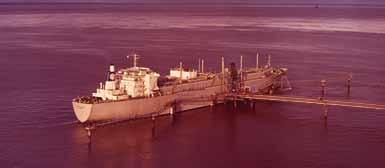
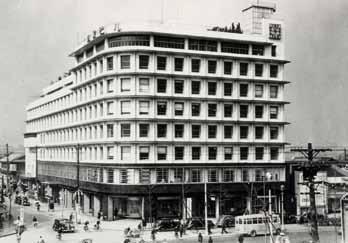
1969 The import of LNG from Alaska begins through the Negishi terminal in Yokohama. In the same year, Japan makes its first upstream investment in an LNG project when Mitsubishi takes a stake in Brunei LNG.
1970 TEPCO, Tokyo Gas and Osaka Gas sign SPAs with Brunei LNG.
1972 The import of LNG from Brunei begins through the Senboku terminal operated by Osaka Gas. This is Japan’s second LNG regasification terminal; today there are 29.
1973 Mitsui invests in the Abu Dhabi Gas Liquefaction Company (ADGAS) and Chubu Electric, Kansai Electric, Osaka Gas, Kyushu Electric and Nippon Steel agree to buy LNG from Indonesia’s Pertamina. At this stage
c Japan’s first LNG cargo
was delivered in November 1969 by the 71,500m ³ Polar Alaska, which operated a shuttle service between Kenai and Yokohama with its sister ship Arctic Tokyo.
x Japan’s first upstream
investment in an LNG project was in Brunei LNG.
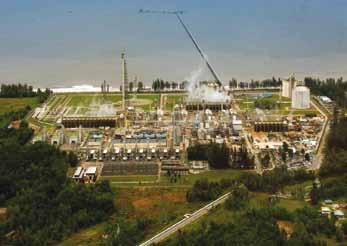
there is no Japanese equity in the Indonesian LNG sector but it does receive financial support from the Japanese government.
1977 The import of LNG from Abu Dhabi, UAE and Indonesia begins.
1978 Mitsubishi invests in Malaysia LNG Satu. Mitsubishi subsequently invests in Malaysia LNG Dua (production from 1995) and Tiga (production from 2003), while JX Nippon Oil & Energy and JAPEX also invest in Tiga.
1980 The sixth international LNG conference is held in Kyoto.
1981 Kawasaki delivers the first Japanese-built LNG carrier, Golar Spirit.
1983 The import of LNG from Malaysia begins. Bishu Maru in service with K Line becomes the first Japanese-built and operated LNG carrier. 1984 Mitsubishi and Mitsui agree to invest in Australia’s North West Shelf project through the jointly owned Japan Australia LNG.
1988 Tokyo Gas completes conversion to a 100% natural gas supply.
1989 The import of LNG from Australia begins. The sixth International Gas Research Conference (now the IGU Research Conference) is held in Tokyo.
1990 Osaka Gas completes conversion to a 100% natural gas supply.
1991 Mitsui invests in Sakhalin Energy and is joined by Mitsubishi the following year.
1992
The IGU Council meets in Osaka.
1994 Mitsubishi, Mitsui and Itochu invest in Oman LNG.

c LNG imports from
Brunei began in 1972 through Osaka Gas’s Senboku 1 terminal. Senboku 2 (pictured) was commissioned in 1977.
v LNG 6 was held in Kyoto
in April 1980.

1995 On January 17, the Great Hanshin Awaji earthquake causes extensive damage in Kobe and surrounding areas and Osaka Gas temporarily suspends service to 857,400 customers.
Deregulation of the Japanese gas market begins in March with the supply to large volume users (annual consumption of 2 mcm and above).
1997 The import of LNG from Qatar begins with Marubeni and Mitsui as investors in Qatargas I. (Mitsui subsequently also invests in Qatargas III.) Itochu, LNG Japan and Nissho Iwai invest in RasGas 1.
1999 Deregulation of the Japanese gas market continues with the supply to users with annual consumption of 1 mcm and above; the top four gas companies have to allow third-party access (TPA) to their pipelines.
Japan drills the first offshore methane hydrate exploration wells at a single location in the Nankai Trough.
2000 The import of LNG from Oman begins. In June, Japan assumes the Presidency of IGU for the 2000-2003 Triennium and in October hosts the IGU Council meeting in Kyoto.
2003 In June, Japan hosts the 22nd World Gas Conference and the IGU Council meeting in Tokyo.
INPEX, TEPCO and Tokyo Gas invest in Darwin LNG. Subsequently, JERA, a joint venture of Chubu Electric and TEPCO, takes over TEPCO’s interest (in 2016).
2004 Deregulation of the Japanese gas market for those consuming 500,000 mcm and above; TPA applies to all gas companies; accounting separation of transportation sectors mandated.

c Japan started LNG
imports from Australia when the North West Shelf project started up in 1989. Today Australia is the largest supplier of LNG to Japan.
v HIH Crown Prince
Naruhito addressing the opening ceremony of the 22nd WGC.

A better world
With natural gas as the world’s cleanest and most ecient fossil fuel, Oman LNG’s operations near the Omani city of Sur, is helping to make for a better world. Since starting production in 2000, we have delivered over two thousand cargoes to customers, remaining a reliable supplier of liqueed natural gas that is helping to reduce carbon emissions and preserve the earth’s natural environment for future generations to enjoy.
For centuries, this beautiful coast-bound nation of Oman was a trade centre connecting dierent parts of the world through vibrant and ourishing commerce relations. Trade that supported lives in far lands. At Oman LNG, we continue that tradition of seafarers and commerce through bringing energy to many corners of the world.
Oman Liqueed Natural Gas LLC (Oman LNG) is a joint venture company established by a Royal Decree in 1994 operating under the laws of the Sultanate of Oman. The company engages in the business of producing and selling liqueed natural gas (LNG), and its by-product, natural gas liquids (NGLs) and operates three liquefaction trains at its plant in Qalhat, South Sharqiyah Governorate.
Hand-in-hand with our operations comes a strong health, safety and environment performance. Our recent achievement of 20 Million man-hours without a Lost-Time Injury (LTI) is testament to our HSE excellence, and an exemplary diligence and commitment to the safety of our people, environment, and communities where we operate. Our processes meet the highest of ISO standards, which we are proud to maintain every year and our ceaseless eorts to support the environment through the sponsoring of various initiatives such as the Turtle Research

and Exhibition Centre in Ras al Jinz in the eastern region of the country boasting one of the world’s largest breeding beaches for Greenback Turtles. Additionally, Oman LNG is a key sponsor of the Environmental Society of Oman’s activities that range from indigenous species protection to the championing of waste reduction, reuse and recycle programmes. As a company our responsibility to our sta, contractors and the community is to provide a safe environment so that they can come to work and return home to their families, every day.
Through our empowerment philosophy, we continue to develop talent and help remove barriers to reach success. Our aim is to develop all sta to their fullest potential. We support in-country value through focused eorts towards developing local content and stimulating local business ventures by enabling Small Medium Enterprises (SMEs), a major cornerstone of Oman’s economy, to ourish and providing equal opportunities to compete for all service contracts.
The company is a corporately and socially responsible organisation by maximising benets to the employees, stakeholders and community and has a well-designed alignment between Corporate Social Responsibility (CSR) and business strategy, to ensure the strategic balance is maintained between
sustainable social development and the business.

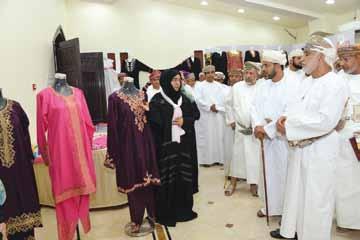
From powering large industries, to keeping homes warm and the lights on, Oman LNG’s your reliable energy partner.
Perpetual sustainable investments in the society of Oman
Corporate Social Responsibility (CSR) has been an integral part of Oman LNG with a focused objective: to deliver tangible value to Oman and its people through social investment by capitalising on the country’s natural gas resource. The company allocates annually 1.5% net income after tax (NIAT) to various social investment and sustainable programmes; a commitment set when the company was founded. In addition, before the rst cargoes left the LNG plant, the company invested in sustainable development projects for the community which speaks volumes about the company’s business principles; that Oman LNG’s initial investment in social development began even before the production line was fully functional.
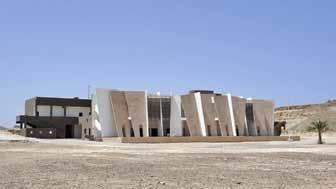
Today, Oman LNG’s CSR programmes span the entire nation and contribute to the socio-economic development of the country. Over the past sixteen years, the company’s social investment programmes have spanned the length and breadth of the country with over 4000 projects ranging from healthcare and education to preserving the environment and road safety; reecting its sincere interest to embed the principles of social responsibility as part of its core existence. Through strengthening the cooperation between the public and private sector, the

projects and programmes aim to supplement the national economy and ambitious development plans implemented in the Sultanate.
Oman LNG Development Foundation supports Oman LNG and the company’s ambitious vision and dedication towards CSR. The Foundation champions private sector contribution to the development of Oman and its people, through CSR and citizenship, as an active contributor to social and societal welfare, and through proactively addressing community needs.
The next stage of the methane hydrate evaluation programme involves the drilling of 32 wells at 16 locations in the Nankai Trough.
2005 Marubeni and Mitsui invest in Equatorial Guinea LNG.
2006 Itochu, Mitsubishi and Osaka Gas invest in Oman’s Qalhat LNG (acquired by Oman LNG in 2013).
2007 Deregulation of the Japanese gas market for those consuming 100,000 mcm and above.
The import of LNG from Equatorial Guinea begins.
Kansai Electric and Tokyo Gas invest in Pluto LNG. Marubeni invests in Peru LNG.
2009 Gas companies in Japan start selling fuel cell systems for residential use under the ENE FARM programme.
The import of LNG from Russia begins.
Tangguh LNG starts production with JX Nippon Oil & Energy, Mitsubishi, INPEX, KG Berau, Sojitz, Sumitomo and Mitsui as investors.
FID reached for Gorgon LNG with Chubu Electric (from 2016 JERA), Osaka Gas and Tokyo Gas as investors. FID reached for Papua New Guinea LNG with JX Nippon Oil & Energy as an investor to be joined by Marubeni in 2011.
2010 Tokyo Gas invests in Queensland Curtis LNG.
2011 On March 11, the Great East Japan earthquake and a tsunami cause devastation. The Fukushima Daiichi nuclear power station is damaged and shuts down.Other nuclear power stations are shut down in rapid succession. Gasfired power generation takes up the burden and LNG imports increase 14% in 2011 to 107 bcm, peaking at 120.6 bcm in 2014.
LNG imports from Peru begin, while FID is

c An aerial view of the
severely damaged Fukushima Daiichi nuclear power station.
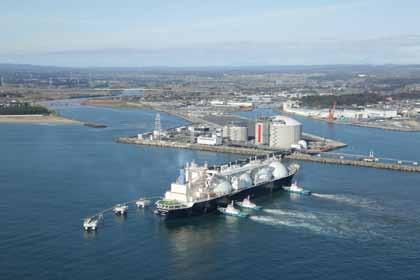
z The Hitachi terminal
operated by Tokyo Gas is Japan’s latest LNG regasification terminal, starting operations in 2016.
reached for Donggi-Senoro LNG with Mitsubishi as an investor.
Kyushu Electric invests in Wheatstone LNG and is joined by JOGMEC, Mitsubishi, NYK and TEPCO (from 2016 JERA) the following year.
2012 FID reached for Ichthys LNG, the first majority Japanese-owned upstream LNG project led by INPEX with Chubu Electric (from 2016 JERA), Osaka Gas, Toho Gas and Tokyo Gas as co-investors, joined by Kansai Electric in 2014. INPEX also takes a stake in Prelude FLNG.
2013 Japan achieves the world’s first extraction of gas from offshore deposits of methane hydrate at Daini Atsumi Knoll in the Nankai Trough, but the tests end after six days due to problems with sand flowing into the well.
Mitsubishi, Mitsui and NYK invest in Cameron LNG. 2014 Chubu Electric (from 2016 JERA) and Osaka Gas invest in Freeport LNG.
2015 The Electricity and Gas Market Surveillance Commission is set up. The tugboat Sakigake, Japan’s first LNG-fuelled vessel (apart from LNG carriers using boil-off gas), enters service.
2017 In April, Japan opens its city gas residential market for competition.
Two wells are drilled at Daini Atsumi Knoll for further methane hydrate production tests with different types of preventive measures against sand entry. Production from the first well starts in May and ends after 12 days due to sand entering the well. Production from the second well starts in June and lasts for 24 days without sand intrusion.
In October, the IGU Council meeting is held in Tokyo.

c Seen under construction
at Bladin Point near Darwin, Australia is the liquefaction plant for Ichthys LNG, the first majority Japanese owned upstream LNG project.
v The drilling ship Chikyu
supported the latest methane hydrate test.
